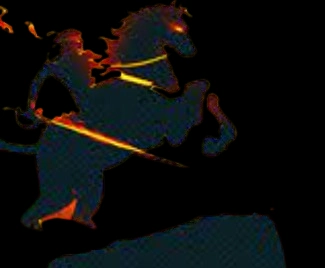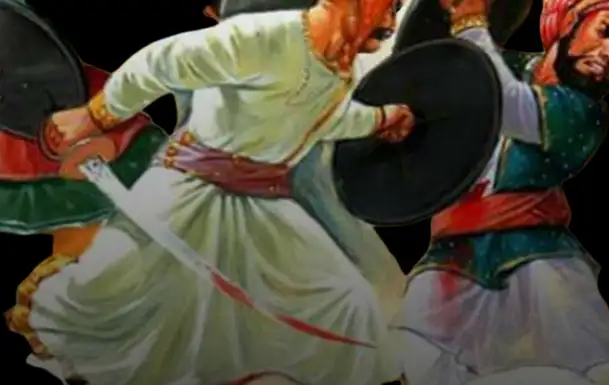Introduction
We all are aware of the charismatic act of the Marathas. They were the one who not just confined the territories of the Mughal Empire but also took back the Sovereignty of Bharat from them by sacrificing their lives whenever needed. We will always be indebted to the Marathas for their selfless sacrifices.
As we all are interested in the story of the heroism of the great Marathas , also we have the curiosity to know the background of the Marathas or the social and ideological rise of the Marathas.
The ongoing ringing bell in the mind of ours for knowing what were the origin of the Marathas and how they came into the main stream line to fight with the Mughals give us goosebumps.
In this article we will discuss about the regions from where the Marathas belonged and who are the Marathas and their origin and social life .
Location
About 4 centuries ago, Maharashtra was enclosed to the Western edge of the Deccan Plateau.
The regions then came under it were Nashik, Pune , Satara district, some parts of Ahmadanagar ,Sholapur and western corner of Aurangabad. They were also spread in some parts of the Konkan region.
That time of Maharashtra was nearly covered by the forests where there was great uncertainty in the rainfall. That uncertainty gave many challenging situations to the people living in Maharashtra.
Who were the Marathas
- The people of Maharashtra about the 4th centuries ago were divided into multiple castes .Marathas were the people belonged to the low caste in Maharashtra .The people or the soldiers who joined Shivaji came from the low caste named Maratha and Kunbis.
- Marathas were independent, simple trustworthy , ingrained with former greatness ,more active and courageous people.
- Kunbis too carried the same characters as the Marathas had but they are softened people while Marathas were more rough and tough, more cunning and very straight forward people.
- They used to give huge respect to their women. They were happy to live their simple life rather than becoming a woman of the harem of the Mughal kings.
- Marathas were considered as the great diplomats. They had the power of translating their thoughts into deeds. They had the sense of equality for men as well as women.
- The great Saints like Tukaram, Eknath, Vaman Pandit and Ramdas play the significant role in mapping the future of India through encouarging Marathas to take back the lands from the invaders.
A learned chinese traveller who came in the 7th century mentioned about the Marathas
” The inhabitants are proud spirited and war- like, grateful for favours and revengeful for wrongs, self-sacrificing towards the suppliants in distress and fight to death with anyone who treated them insultingly. “
The nature of the inhabitants were the same even in 17th century. But gradually disappearance of large Hindu monarchies of the provinces and the growing rigorusness and occupation of the Mughal had made the Marathas to indulge in robbery and looting the invaders whenever they got the chance in such forest covered areas of the Maharashtra.

Many kings at different time periods had cut flights of the steps or winding roads up the rocks, fortified the entrance with a succession of gateways and erected towers to command the approaches. This way the whole regions were interspersed with forts .
In most of them, there were the facilities of securing water either in tanks or reservoirs during the periodical rains from may to October.
Click here to know the complete history of the Marathas
Advantages to the Marathas in isolation
Losing their own cities and capitals on the Godavari and the Krishna river in the 14th century compelled them to isolate themselves to the western edge of the plateau and became more poorer. But there were many advantages they had living in the forest.
- The people who love to enjoy independency was significantly protected by nature which provided them existed defensible force close at hands where they can easily be reached and taken refugees and initiate their resistance against opponents.
- The people living there were in peace while the richer Plains had been the scenes of revolution and damages.
- Struggle with nature and beasts made them like Iron Man. They became more artful or trickery in executing their plans.
- Their ability to plan and execute surprise night-attacks and having the great skill to disentangle themselves from a tight corner and using different tactics in different phases of the battle made them a warrior against Mughals.
- Across this rugged tract or path where the Marathas used to live was the only route to connect the Ocean ports of Western coast to the rich capitals and marts of Central Deccan.
- This route was used by the invaded kingdoms in India to recruit soldiers from Persia ,Arabia, Turkey, Abyssinia and Central Asia. These recruited armies were Welcomed in Muslim courts of kulbarga, Bidar ,Ahmednagar ,Bijapur and Golconda.
- Maharashtra was the only route available at that period of time which was used for transporting expensive clothes, metal-ware and other things to Europe.
- Initial rise of the Marathas wasn’t effective as the subjects living their didn’t get impressed because the Marathas appeared as a race of upstarts, insolent in prosperity, lacking in grace against the over fashionable lifestyle of the Mughals.
- They didn’t have the taste for fine arts not a good architect. The reason could be back to back invading in India and making the people poorer . Marathas heavy warfare with Mughals, Bijapur and other opponents also didn’t give them enough time to turn their eyes towards the architect and arts.

Isolation of the Marathas
Disadvantage of living in such uncertain climate
- Due to uncertain rainfall, the cultivation was poor and precarious. In such a kind of soil, no rice cultivation is possible. Wheat, barley, millets, Jawari, bajara , Ragi Or maize were the only crops which were cultivated there in small quantities.
- Just one year of failure in rain had enough to bring famine throughout the length and breadth of the land.
- With such nature , it demotivated travellers and people from other regions to settle down there.
- The merchants didn’t find it a prosperous place to generate income.
- There was no expanded land for the march of large bodies of soldiers .
- The people living there were isolated from the outside world. They didn’t have the information of what was going on in their neighbouring States. They were that much detached from others.
- Occasional visitors came there just for their self purpose and returned back to their own land as soon as their work got completed. They didn’t want to live in such sequestered vales of the Marathas.
- The living style of the people were very much limited to their necessities. Both men and women had to work for their livings.
- There were no space for the culture growth as the people living there had a minimum option for their growth. To maintain a culture, a society has to be developed but when poverty touches your houses then only limited rituals could be possible.
- Even the locals who went abroad as recruiting soldiers got settled down themselves there and hardly came to their ancestral homes.
It will be incorrect to say that no winning Empires or Invaders had tried to invade these lands but the floods of invasion had been broken at the foot of the Hills and those who had crossed it, found the land unprofitable and retired soon.

2 thoughts on “History of Maratha Caste | Maharashtra Category”